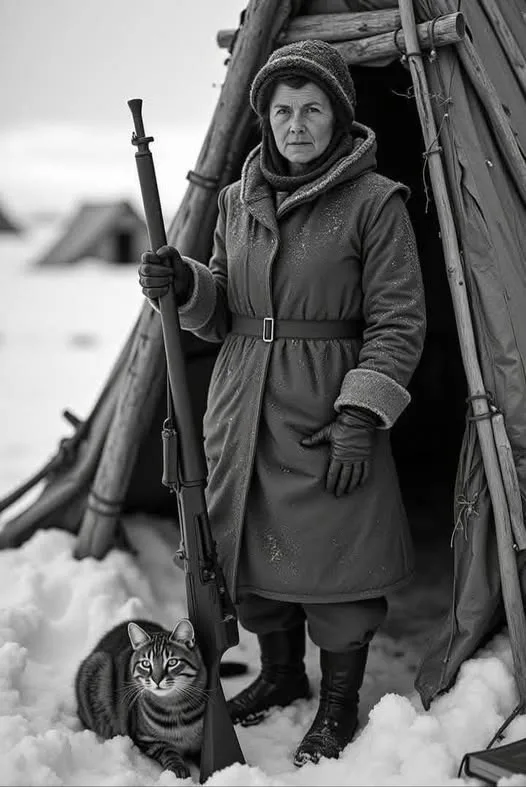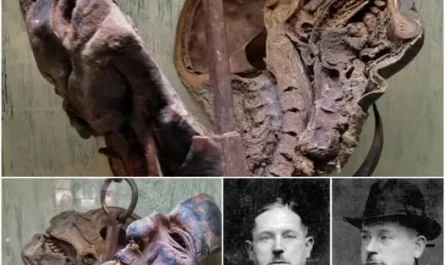Introduction
In the unforgiving expanse of the Arctic, a story of remarkable resilience unfolded in 1921. Ada Blackjack, a young Inuit mother from Alaska, embarked on a journey that would test her beyond imagination. Driven by the desperate need to support her ailing son, Bennett, she joined an ill-fated expedition to Wrangel Island as a seamstress. On this Wednesday, July 9, 2025, at 12:03 PM +07, let’s honor her tale—a saga of survival, courage, and an indomitable will that turned an ordinary woman into a legend.

The Journey Begins
Ada Blackjack was no explorer or hunter. Born in 1898 in Spruce Creek, Alaska, she was a seamstress with limited means, facing the heartbreak of her son’s illness and her husband’s abandonment. In 1921, she seized an opportunity offered by Vilhjalmur Stefansson, a Canadian explorer with a vision to claim Wrangel Island for Canada. The mission included four white men—Allan Crawford, Lorne Knight, Frederick Maurer, and Milton Galle—and Ada as the sole woman and Inuk member. Their goal was to establish a presence on the remote, uninhabited island, 700 miles north of Siberia. Equipped with inadequate supplies and optimism, they set sail in September 1921, unaware of the trials ahead.
The Turn of Fate
The expedition quickly unraveled. By 1923, dwindling food stocks forced the men to attempt a perilous trek across the ice to Siberia for help. Tragically, they never returned, likely succumbing to the brutal Arctic conditions. Ada was left behind with Lorne Knight, who was gravely ill with scurvy, and a cat named Vic, the expedition’s mascot. As Knight’s health deteriorated, Ada became his caregiver, but soon he too passed away, leaving her alone with Vic in a frozen wilderness. With temperatures plummeting below -40°F and no rescue in sight, Ada faced starvation, isolation, and the constant threat of polar bears.
A Fight for Survival
What followed was a testament to Ada’s extraordinary resourcefulness. With no prior hunting experience, she taught herself to use a rifle, securing food by shooting seals and trapping foxes. When polar bears prowled too close, she defended herself with a knife, her courage outweighing her fear. Her sewing skills, honed as a seamstress, became a lifeline as she crafted mittens to protect her frostbitten fingers. In the long, dark nights, she found solace in reading the Bible aloud, her voice a beacon of hope. Vic, the loyal cat, curled beside her, providing warmth and companionship. For two years, from 1923 to 1924, Ada endured, her determination fueled by the thought of returning to Bennett.
Rescue and Recognition
On August 19, 1924, a rescue ship finally reached Wrangel Island. The crew found Ada alive—thin, worn, but unbroken. She had survived against all odds, her spirit unyielding despite the loss of her companions. The world, however, turned its attention to the men’s failed mission, and Ada’s heroism was nearly forgotten. Stefansson downplayed her role, and headlines focused on the explorers’ demise. Yet, her story persisted through the efforts of journalists and historians who recognized her as the true survivor. She reunited with Bennett, who had been cared for by others, and lived quietly until her death in 1983 at age 85.
A Legacy of Strength
Ada Blackjack’s tale is more than a survival story—it’s a celebration of a mother’s love and a woman’s grit. In a time when Indigenous voices were often overlooked, she proved her worth through action, not words. Today, she is remembered as a survivor, a fighter, and a legend. Her bond with Vic, her ingenuity with limited tools, and her endurance in the face of despair inspire us to find strength in our own challenges. On this July day in 2025, let her story remind us that true courage often lies in the quiet resolve of those the world nearly forgets.





